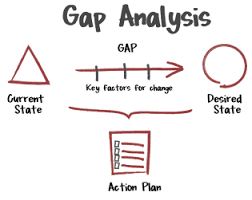Gap Analysis for Regulatory Compliance

Gap Analysis for Regulatory Compliance
Gap Analysis is a structured approach used in pharmaceutical and life sciences industries to identify the differences (“gaps”) between current practices and regulatory requirements or industry standards (e.g., FDA, EMA, ICH, WHO).
Key Steps in Gap Analysis:
-
Define the Scope – Identify which regulations, guidelines, or standards apply (e.g., cGMP, GDP, GCP).
-
Assess Current State – Review existing processes, procedures, documentation, and systems.
-
Identify Gaps – Highlight areas of non-compliance, missing documentation, inadequate training, or outdated SOPs.
-
Risk Assessment – Evaluate the criticality of each gap in terms of product quality, patient safety, and regulatory impact.
-
Action Plan – Develop corrective and preventive actions (CAPA) with timelines, responsibilities, and priorities.
-
Implementation & Monitoring – Ensure closure of gaps and monitor for sustained compliance.
Benefits:
-
Improves regulatory readiness.
-
Strengthens quality management systems (QMS).
-
Reduces risk of non-compliance during inspections.
-
Supports continuous improvement and business sustainability.
🎓 Discover one of the best Pharmaceutical Quality Assurance course available —click below to explore the course that’s shaping future Quality Assurance skills.
https://trcjw.on-app.in/app/oc/306166/trcjw

